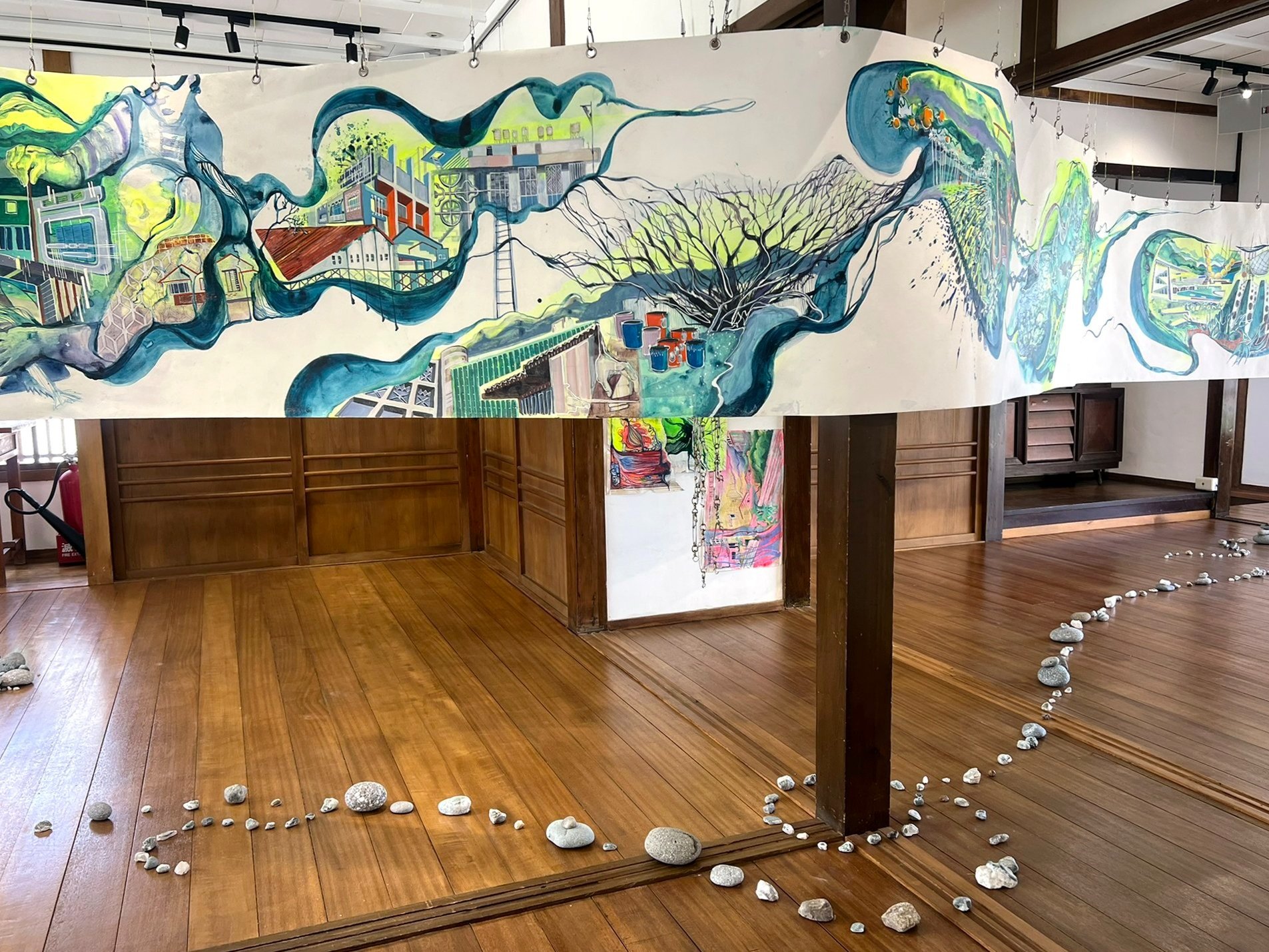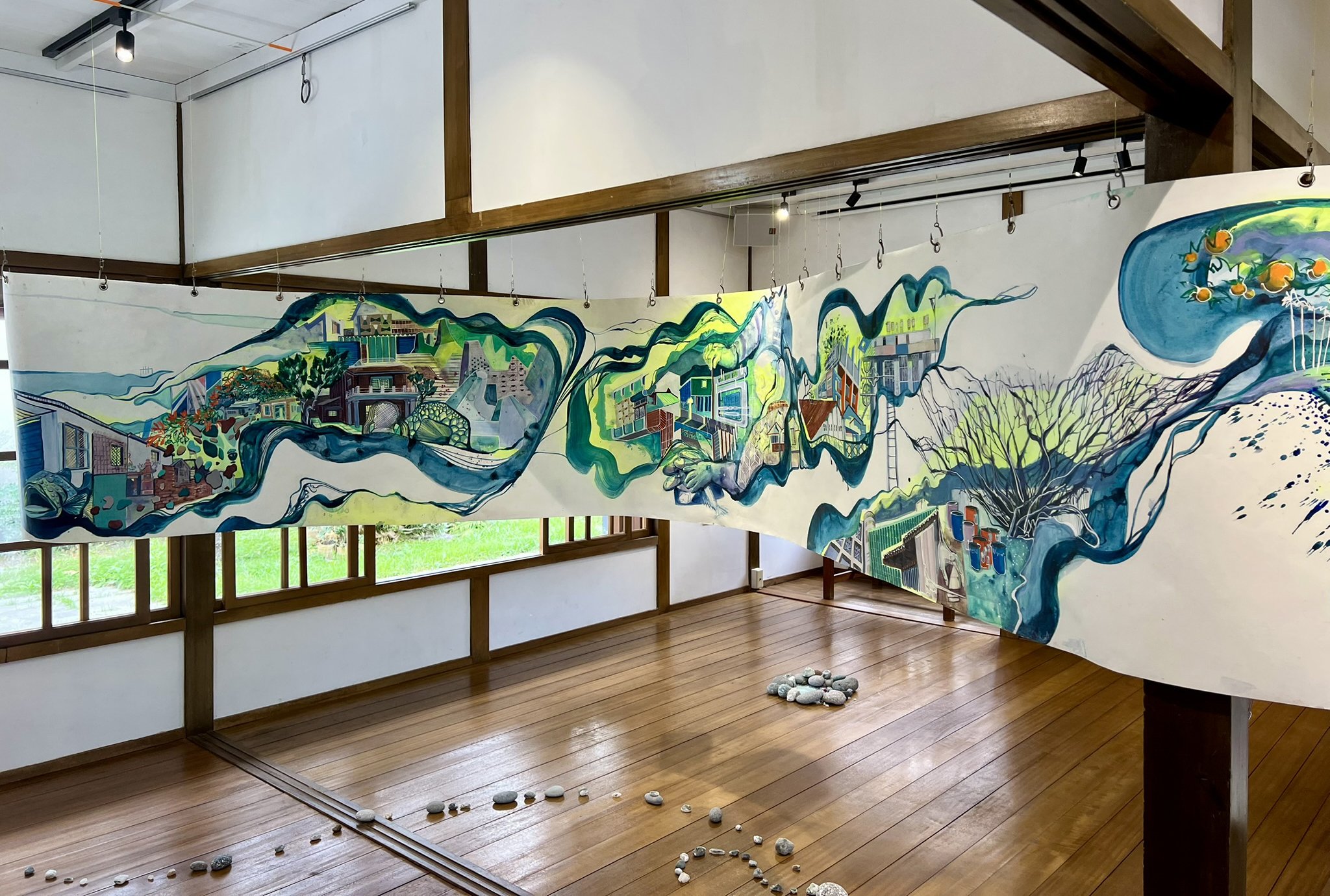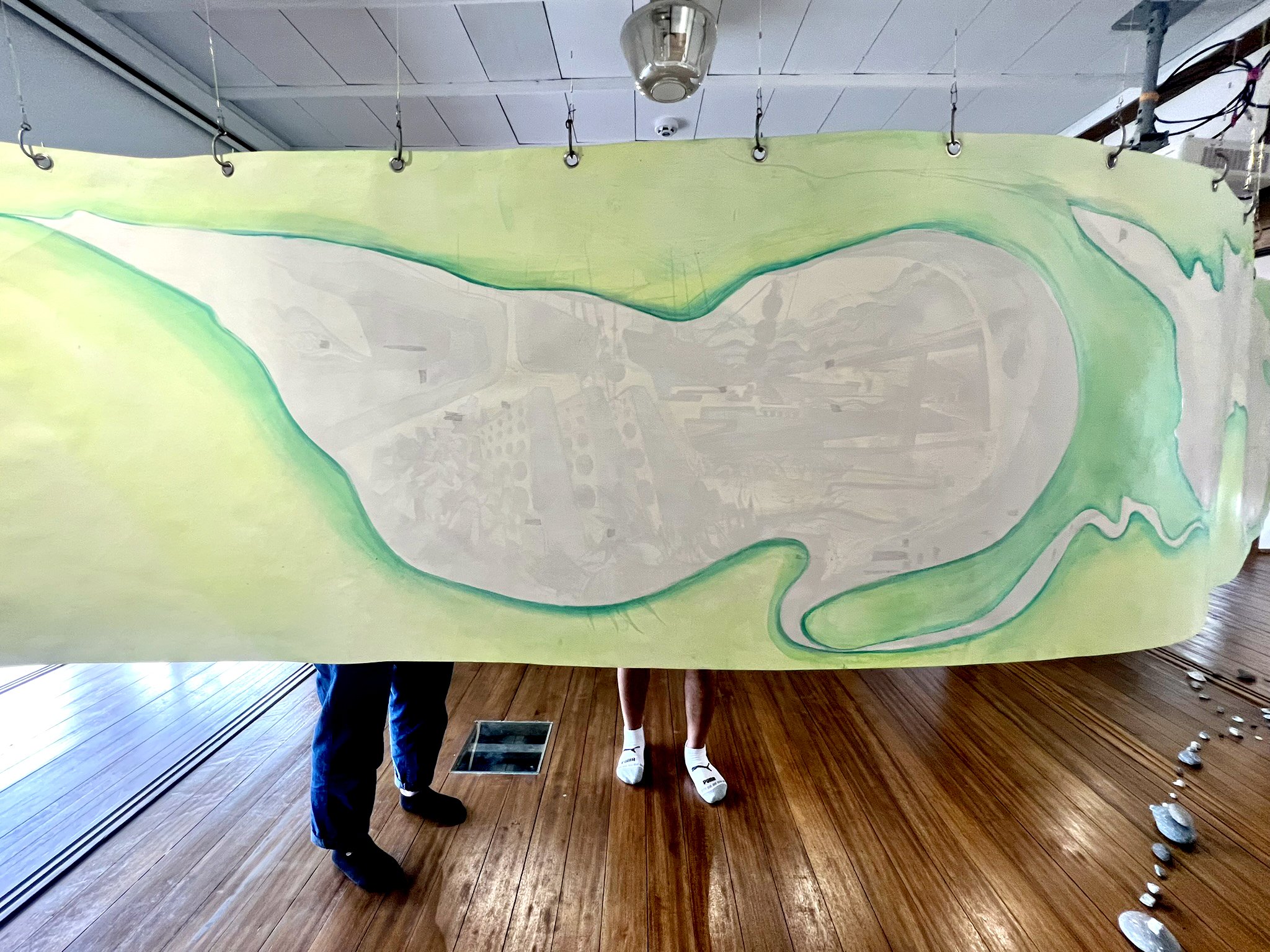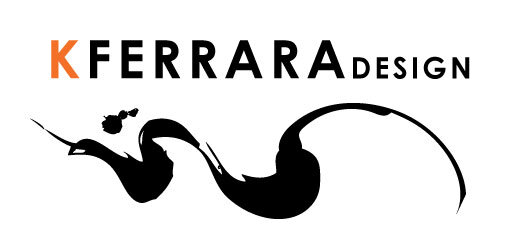ARTIST RESIDENCY : March 5-April 19
Chenggong, Taitung, Taiwan
This series is about Chenggong—its’ architecture, patterns, textures, colors, and the way it holds time.
It reflects my journey through Chenggong during the residency—beginning in the studio and Tiao Gang Café, and expanding outward through alleyways, the countryside, and eventually the coastline. That shift—from dense to open—mirrored my own unfolding experience of time and place. The diagonal composition, always leaning toward the sea, became a symbol of growth and possibility.
I’ve been fascinated by how spaces evolve: layers of new construction settling over the old, nature quietly reclaiming structures, plants creeping through cracks and softening the edges. These subtle changes tell a story, like the city’s own fingerprint—shaped by time.
The work is about a landscapes, memory and dreams

The scroll format, suspended from fishing hooks, was inspired by the local long-line fishing techniques and chinese calligraphy

As the scroll moves from left to right, architectural collages in these dream-like blobs give way to natural forms...

Its amorphic forms and floating vignettes evoke fragmented impressions of the city.

As the scroll moves from left to right, architectural collages give way to forms generated from the visual patterns of the natural lanscape and indigenious tribes...

Its amorphic forms and floating vignettes evoke fragmented impressions of the city. The SanxianTai Bridge...

... the port, and the sea—reflecting Chenggong’s evolving identity.

Arranged diagonally across the space, the scroll echoes the architecture of the original house, where the second floor opens toward the ocean. This gesture of expansion represents a city in motion—rooted in history, reaching toward the future.

On the back of the scroll, ghosted outlines of the front image reappear in softer tones, layered with fragments of Chenggong telephone books and newspapers.

These fragile, almost translucent materials contain traces of real lives—names, numbers, and addresses—honoring the past and grounding the work in a specific place and time.

Their reuse brings new life to what was once forgotten, echoing the theme of layered histories.
